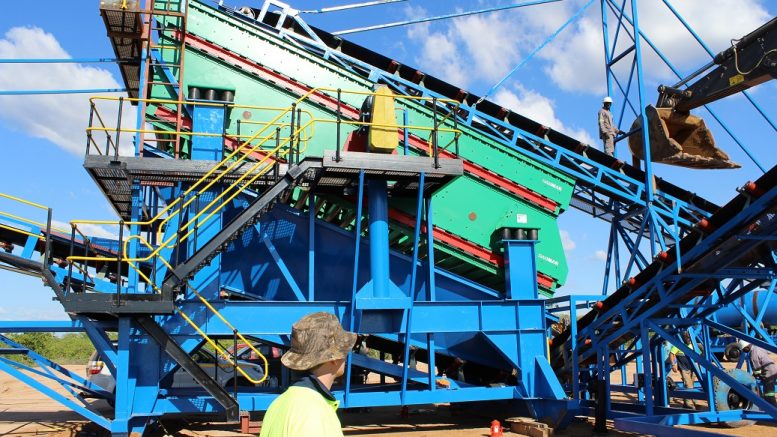Diamcor Mining’s (TSXV: DMI) Krone-Endora project isn’t a typical diamond development story.
The project, next to De Beers’ Venetia mine in South Africa, is an eluvial deposit, representing a direct shift of material from the Venetia pipe. The gravels at Krone-Endora contain high-quality diamonds, but the material is low-grade and variable.
This all makes it difficult to explain to investors.
“It’s a bit tricky when we look at our project and the way people see it. It’s not typical of the fashion that you would see the development of a kimberlite where you have a uniform deposit,” said Diamcor CEO Dean Taylor in an interview at the Prospectors and Developers Association of Canada conference in March.
“Because the deposit is not uniform, you really can’t advance it in a normal fashion like you would a kimberlite. You can’t really do a PEA or a feasibility – the path for something like this is large-scale trial mining.”
Since acquiring the project in 2011 from De Beers, Diamcor has installed modular processing, dry screening and DMS plants, as well as other infrastructure, including a final recovery and sorting facility that has a large diamond recovery circuit.
With an abundance of very fine material that traps water in the deposit, the company has spent a lot of time fine tuning the dry-screening operations to remove as much of the fines as possible before processing.
“We dry screen down to a cutoff of about 1 mm which gives us an effective cutoff rate of under 1 mm for the material,” Taylor says. “We remove 60-65% of the material we recover out of the quarry in that first process. It doesn’t use water, it’s very efficient and low cost – we’re really pre-concentrating, so then you can put in a much smaller DMS plant.”
The dry screening plant runs at 500 or 600 tonnes per hour while the DMS is about 150 tonnes per hour.
The time spent on dry screening has made a big difference in operations, Taylor says, allowing the company to now focus on ramping up production and finding operational efficiencies.
Currently, the company is running operations with a loss of only 1¢ per share. Taylor thinks the company could attain profitability this year.
“We want to see the plant working really, really well, and get to the level where the tonnage and the amount we’re running would be profitable. Then we can say, okay we know we can run at these levels so we’re going to make an initial production announcement.”
Taylor also expects average diamond sales prices to rise since the company started to process larger material last November. Before that, the majority of the material processed was under 15 mm with larger material being stockpiled.
The company’s average achieved price to date is US$176.16 per carat. However, in its second tender of 2019, it achieved US$308.06 per carat (1,220.23 carats sold for gross proceeds of US$375,900).
–This article originally appeared in the June 2019 issue of Diamonds in Canada magazine.




Be the first to comment on "Diamcor nears production announcement"